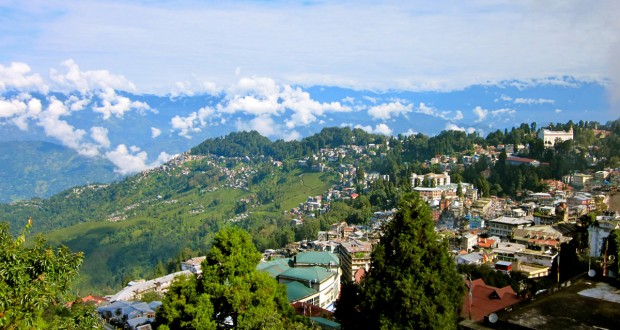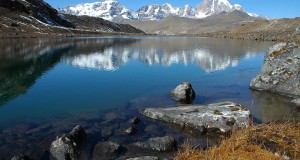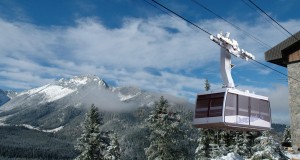Ruled first by the Rajahs of Sikkim (until the start of the 18th century), then by the Gurkhas of Nepal, who invaded Sikkim in 1780, and then returned to the Rajahs by the East India Company. Darjeeling had a 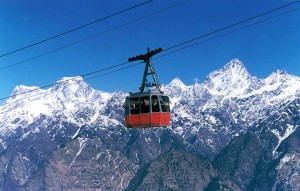 chequered history before being ‘discovered’ in 1828 by two British officers on a fact-finding mission. At that time, Darjeeling was Dorje Ling or ‘Place of the Thunderbolt’. This was the mystic thunderbolt of Lamaist religion, representing the sceptre of Indra (Lord of the Gods) said to have fallen here, on the site presently known as Observatory Hill. The town of Darjeeling grew up around the ex-Buddhist monastery of Dorje Ling, which had been built on this hill.
chequered history before being ‘discovered’ in 1828 by two British officers on a fact-finding mission. At that time, Darjeeling was Dorje Ling or ‘Place of the Thunderbolt’. This was the mystic thunderbolt of Lamaist religion, representing the sceptre of Indra (Lord of the Gods) said to have fallen here, on the site presently known as Observatory Hill. The town of Darjeeling grew up around the ex-Buddhist monastery of Dorje Ling, which had been built on this hill.
4 The two officers quickly appreciated Darjeeling’s strategic importance as a possible access in Nepal and Tibet, and its recreational potential as a hill station resort. They reported back to the Calcutta authorities, who put pressure on the Rajah to grant the site to the British in return for an annual fee of Rs2000. Darjeeling quickly developed as a trading centre and a tea-growing centre, and despite much opposition from Tibetan lamas and merchants, whose own fortunes were threatened, the British hold on the area strengthened. In 1849, they annexed the whole territory between the present borders of Sikkim and the Bengal plains, making Darjeeling, previously just an isolated enclave within Sikkimese territory, part and parcel of other British territory further south.
The British arrived to find Darjeeling reclaimed by forest, the once large and busy village 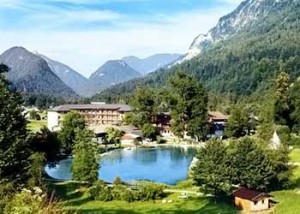 almost completely deserted. They began a rapid development programme, which by the early 1840s had produced roads, many houses, a hotel, a health sanatorium and several tea plantations using bushes smuggled from China. Not just British army officers and their wives, but also British families working and living down on the plains, mainly in Calcutta, began to use Darjeeling as a summer ‘health’ resort. The only problem was transport, visitors taking nearly a month to get up here from Calcutta by cruising up the Ganges, crossing the plains of Bihar and Siliguri, and proceeding up the old Hill Cart Road by bullock cart or buggy. The cost of such a journey (Rs2000) was also prohibitive. This led to the construction of the famous ‘toy train’ miniature railway, completed in 1881, which reduced the length of the trip up from Calcutta to just a couple of days.
almost completely deserted. They began a rapid development programme, which by the early 1840s had produced roads, many houses, a hotel, a health sanatorium and several tea plantations using bushes smuggled from China. Not just British army officers and their wives, but also British families working and living down on the plains, mainly in Calcutta, began to use Darjeeling as a summer ‘health’ resort. The only problem was transport, visitors taking nearly a month to get up here from Calcutta by cruising up the Ganges, crossing the plains of Bihar and Siliguri, and proceeding up the old Hill Cart Road by bullock cart or buggy. The cost of such a journey (Rs2000) was also prohibitive. This led to the construction of the famous ‘toy train’ miniature railway, completed in 1881, which reduced the length of the trip up from Calcutta to just a couple of days.
Darjeeling has two tourist ‘seasons’. The spring season of mid-April to mid-June is the greenest, most beautiful time to visit and a cool retreat from muggy Calcutta; the autumn season of September–November gives the best mountain views though a prolonged monsoon can have the rain still teeming down at the end of October. Take warm clothing at all times: evenings can be very cool. Buddha’s birthday (1 May) is Darjeeling’s biggest and best festival with colourful Tibetan Buddhist processions and the whole town celebrating.
Foreign visitors coming into Darjeeling are often struck by three things: first, the cool 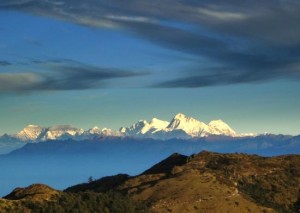 climate; second, the dense greenery of the place, not so much the tea plantations, which lie mainly off the beaten track but rather, the pine forests, mountain meadows and shrubbery; third, the incredible diversity of cultures and peoples. Darjeeling, like Kathmandu, is a real pot-pourri of different racial types and groups; Tibetan Lamas in their yellow robes and Tibetan ladies in striped aprons, ornaments and brocades; Gurung farmers from central Nepal and Gorkhas from eastern Nepal fair-skinned Sikkimese, Lepchas and Bhutias, and Drukpas of Bhutan also the famous mountaineering Sherpas and a great many local tourists either on holiday, or visiting their children being schooled here. Since Independence, much of Darjeeling’s prosperity comes not from high-class British sponsorship or from its renowned tea trade which is greatly suffering today, due to soil erosion and little replanting of new tea trees, but from the local tourist market and from its schools, where well-to-do Indian children receive a ‘proper English education’. In this queer quest for Western-style knowledge, they progress from kindergartens like Mini-land and Love-Bud to impressively named academies like North Point, St Paul’s and Loreto.
climate; second, the dense greenery of the place, not so much the tea plantations, which lie mainly off the beaten track but rather, the pine forests, mountain meadows and shrubbery; third, the incredible diversity of cultures and peoples. Darjeeling, like Kathmandu, is a real pot-pourri of different racial types and groups; Tibetan Lamas in their yellow robes and Tibetan ladies in striped aprons, ornaments and brocades; Gurung farmers from central Nepal and Gorkhas from eastern Nepal fair-skinned Sikkimese, Lepchas and Bhutias, and Drukpas of Bhutan also the famous mountaineering Sherpas and a great many local tourists either on holiday, or visiting their children being schooled here. Since Independence, much of Darjeeling’s prosperity comes not from high-class British sponsorship or from its renowned tea trade which is greatly suffering today, due to soil erosion and little replanting of new tea trees, but from the local tourist market and from its schools, where well-to-do Indian children receive a ‘proper English education’. In this queer quest for Western-style knowledge, they progress from kindergartens like Mini-land and Love-Bud to impressively named academies like North Point, St Paul’s and Loreto.
 Discounting the disturbing appearance of gum-chewing young Nepalis (a Michael Jackson look-alike brigade) and of Kung Fu video palaces, Darjeeling remains one of India’s most pleasant, fascinating hill stations. The old guard, mainly restaurant staff or street-pedlars with fond memories of the Raj, still address Western women as ‘memsahib’ and invite foreigners into their homes for endless cups of tea. The atmosphere is relaxing and beguiling, a curious, intoxicating blend of British character and architecture interspersed with Tibetan/Nepali curio shops, jewellers, refugee camps and smoky tin–roofed wooden shacks. Here are lots of ponies, brightgreen park benches, clean and civilised town squares, and rows of little wrinkled ladies selling woollen rugs, shawls and acrylic sweaters to shivering Indian tourists.
Discounting the disturbing appearance of gum-chewing young Nepalis (a Michael Jackson look-alike brigade) and of Kung Fu video palaces, Darjeeling remains one of India’s most pleasant, fascinating hill stations. The old guard, mainly restaurant staff or street-pedlars with fond memories of the Raj, still address Western women as ‘memsahib’ and invite foreigners into their homes for endless cups of tea. The atmosphere is relaxing and beguiling, a curious, intoxicating blend of British character and architecture interspersed with Tibetan/Nepali curio shops, jewellers, refugee camps and smoky tin–roofed wooden shacks. Here are lots of ponies, brightgreen park benches, clean and civilised town squares, and rows of little wrinkled ladies selling woollen rugs, shawls and acrylic sweaters to shivering Indian tourists.
In the late 80s severe friction between the GNLF (Gorkha National Liberation Front) and the West Bengal government transformed this once-lovely queen of hill stations into something of a tourist wasteland. The situation has now settled with the establishment of the Gorkha Hill Council giving the people of Darjeeling and Kurseong Districts a level of self-government within the state of West Bengal.

